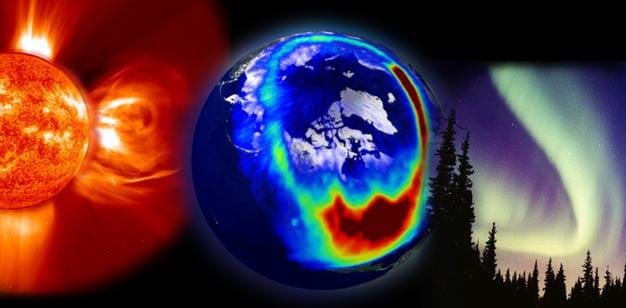
Summary
This unit begins by introducing students to the historical motivation for space exploration. They learn about the International Space Station, including current and futuristic ideas that engineers are designing to propel space research. Then they learn about the physical properties of the Moon, and think about what types of products engineers would need to design in order for humans to live on the Moon. Lastly, students learn some descriptive facts about asteroids, such as their sizes and how that relates to the potential danger of an asteroid colliding with the Earth.Engineering Connection
Engineers make space travel possible. Mechanical engineers design materials and components for space conditions. Biomedical engineers design ways to care for astronauts' health while traveling in space. From designing flight plans, trajectories and spacecraft to get us to the Moon safely, to ingenious tools and technologies that will someday enable humans to live on the Moon, engineers play a vital role in space travel and discovery.
Educational Standards
Each TeachEngineering lesson or activity is correlated to one or more K-12 science,
technology, engineering or math (STEM) educational standards.
All 100,000+ K-12 STEM standards covered in TeachEngineering are collected, maintained and packaged by the Achievement Standards Network (ASN),
a project of D2L (www.achievementstandards.org).
In the ASN, standards are hierarchically structured: first by source; e.g., by state; within source by type; e.g., science or mathematics;
within type by subtype, then by grade, etc.
Each TeachEngineering lesson or activity is correlated to one or more K-12 science, technology, engineering or math (STEM) educational standards.
All 100,000+ K-12 STEM standards covered in TeachEngineering are collected, maintained and packaged by the Achievement Standards Network (ASN), a project of D2L (www.achievementstandards.org).
In the ASN, standards are hierarchically structured: first by source; e.g., by state; within source by type; e.g., science or mathematics; within type by subtype, then by grade, etc.
See individual lessons and activities for standards alignment.
Subscribe
Get the inside scoop on all things TeachEngineering such as new site features, curriculum updates, video releases, and more by signing up for our newsletter!Unit Schedule
- Day 1: Space Travel lesson and Into Space! activity and/or Solar Sails: The Future of Space Travel activity
- Day 2: Into Space! activity
- Day 3: Life on the Moon lesson
- Day 4: My Moon Colony activity
- Day 5: Asteroids lesson
- Day 6: Earth Impact activity
More Curriculum Like This

Students are introduced to the historical motivation for space exploration. They learn about the International Space Station as an example of space travel innovation and are introduced to new and futuristic ideas that space engineers are currently working on to propel space research far into the fut...

Students learn about the physical properties of the Moon. They compare these to the properties of the Earth to determine how life would be different for people living on the Moon.

Students learn some basic facts about asteroids in our solar system, mainly about the size of asteroids and how that relates to the potential danger of an asteroid colliding with the Earth. Students are briefly introduced to the destruction that would ensue should a large asteroid hit, as it did 65 ...

Students are introduced to the International Space Station (ISS) with information about its structure, operation and key experiments.
Copyright
© 2008 by Regents of the University of ColoradoSupporting Program
Integrated Teaching and Learning Program, College of Engineering and Applied Science, University of Colorado BoulderAcknowledgements
This digital library content was developed by the Integrated Teaching and Learning Program under National Science Foundation GK-12 grant no. 0338326. However, these contents do not necessarily represent the policies of the National Science Foundation, and you should not assume endorsement by the federal government.
Last modified: November 1, 2018







User Comments & Tips